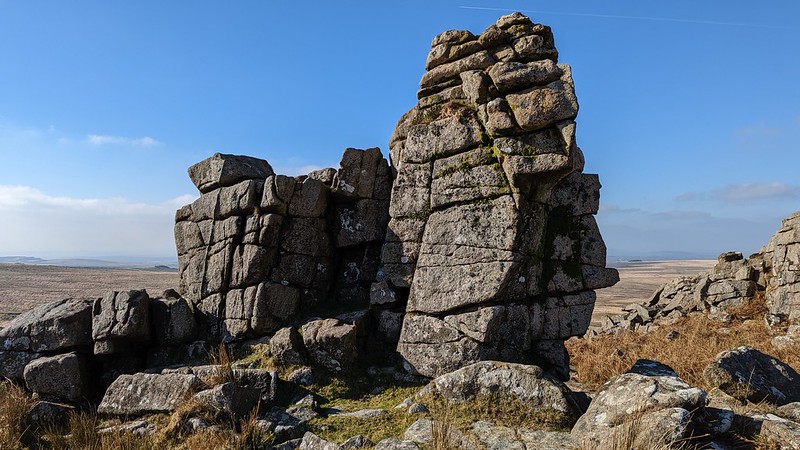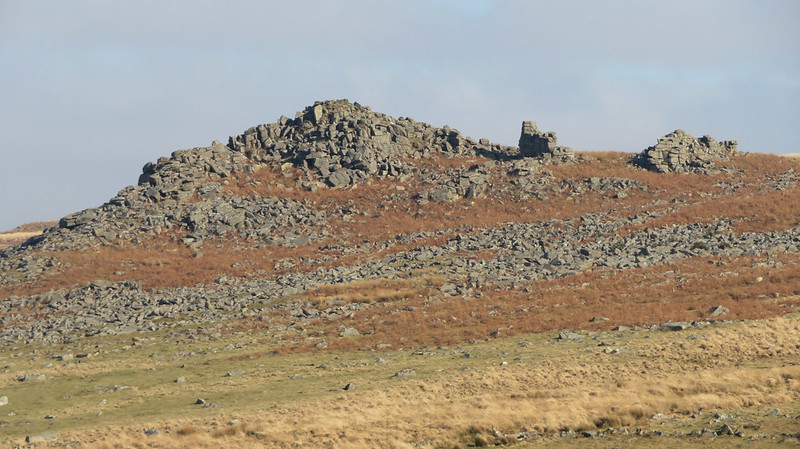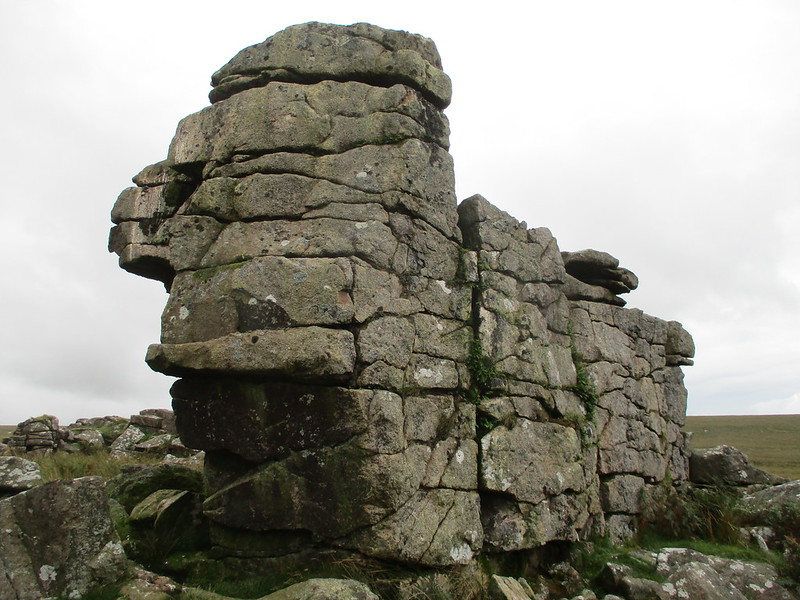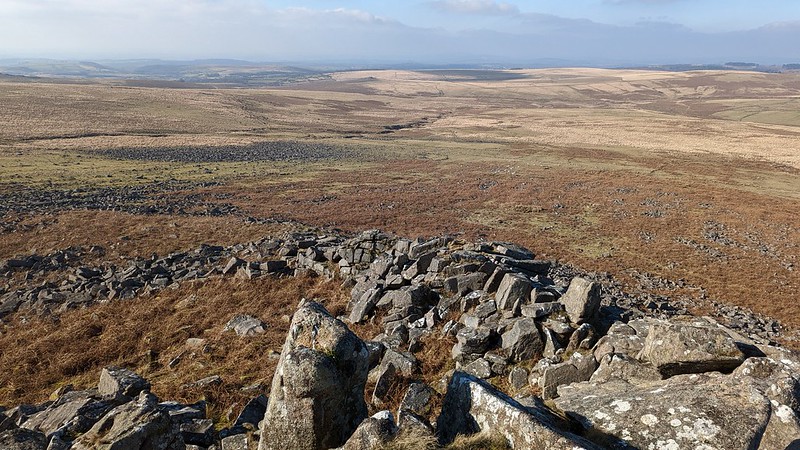TORS OF DARTMOOR
a database of both lesser- & well-known rocks and outcrops
Hen TorHentor, Henter Tor, Henter Tar, Hinter Tarr, Hind Tor
 This is one of South Dartmoor's grandest rockpiles and it is situated on the side of Lee Moor. Dominating the several once productive warrens in the area including Hentor Warren itself, Hen Tor has a mass of historical interest in the vicinity, such as prehistoric settlements at its foot which have utilised the abundant clitter. The tor is perhaps best accessed from the Trowlesworthy Tors to avoid crossing the River Plym, which is usually fast-flowing and can be dangerous and deep.  Despite its striking projection over this part of the moor, Hen Tor is rather underrated in comparison to its more accessible neighbours, which adds to its appeal. Its great cone of weathered granite is somewhat similar to that of Sharpitor (Walkham) but more striking as it is not a summit tor. Crossing writes: "As the ground rises behind Hen Tor the ascent to its summit is easy, and from here a good view of the valley is commanded. The most conspicuous object is the Ditsworthy Warren House, with the clam spanning the river, less than 1 m. distant. Below the tor are the ruined walls of the enclosures of Hen Tor Farm, mixed up with those of pounds of an early date. A number of hut circles will also be seen, some being fairly good examples." The clam is no longer extant.  In addition, Hemery states: "Hen Tor (1,325 feet) is a striking part of the Plym's middle-reach scenery. Its giant cone, so often dark in appearance, protrudes boldly from Hentor Hill on the side of the Plym ridge rising three hundred feet above it. Spreading fanwise from its north-west foot is one of the most remarkable clitters on Dartmoor." Indeed, the clitter is immense but this means that in order to visit the tor you have to circumnavigate it which, particularly in summer when the bracken is up, can be problematic.  Hen Tor sits atop a wealth of historic interest, not least its warren which resided on much more gentle ground around Hentor Meadow. Newman explains: "Legistor Warren was first recorded in 1718, but the earliest reference to Hentor is 1807 (Robertston 1991, 264). It is notable that the remains associated with the warrens of Hentor and Ditsworthy, sit amid evidence of medieval settlements, some of which are documented from the early 14th century, with extensive associated cultivation pits." He continues: "It now seems for certain that rabbit warrening on Dartmoor has origins no earlier than about 1600, and in the Plym Valley the warrens were later conversions of farms that had for several centuries been farmed more conventionally."
| ||||||||||||||||||||||||||||